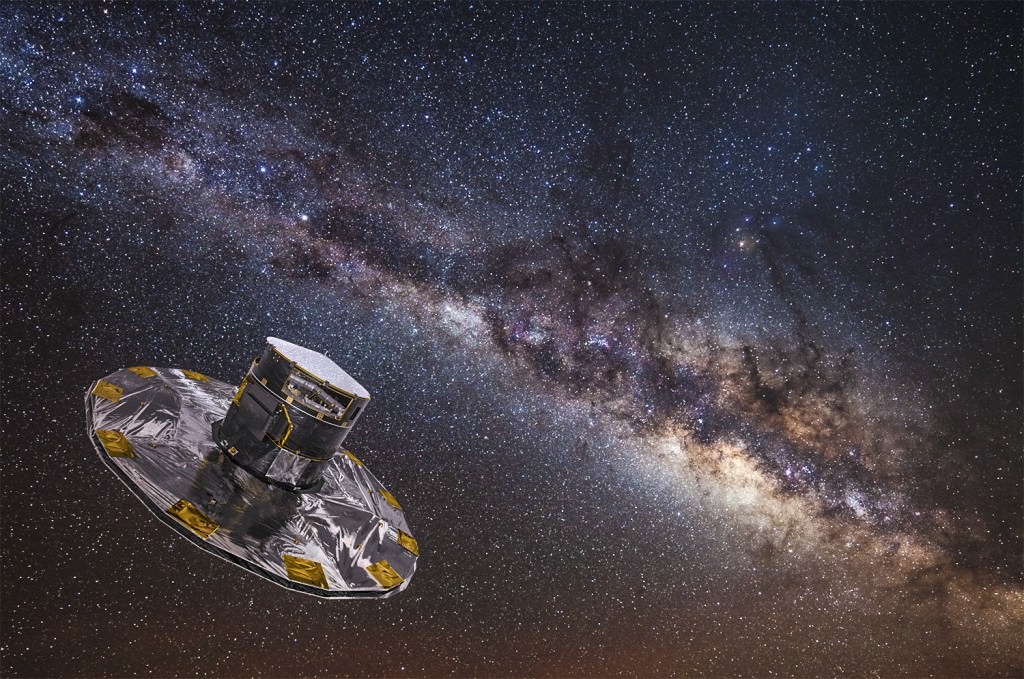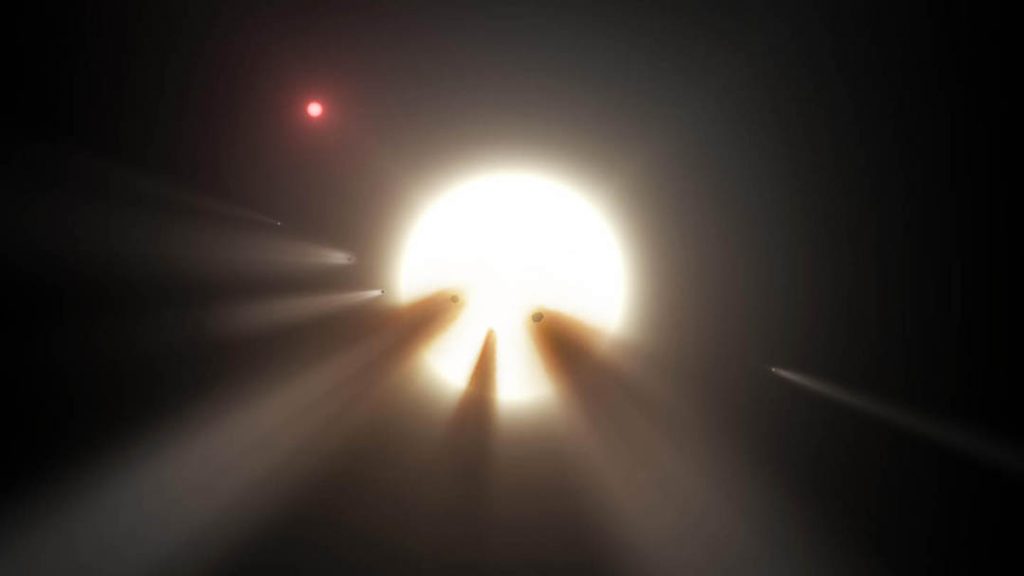In 1.3 Million Years, a Star Will Come Within 24 Light-Days of the Sun
By Matt Williams
Within the Milky Way, there are an estimated 200 to 400 billion stars, all of which orbit around the center of our galaxy in a coordinated cosmic dance. As they orbit, stars in the galactic disk (where our Sun is located) periodically shuffle about and get closer to one another. At times, this can have a drastic effect on the star that experience a close encounter, disrupting their systems and causing planets to be ejected.
Knowing when stars will make a close encounter with our Solar System, and how it might shake-up objects within it, is therefore a concern to astronomers. Using data collected by the Gaia Observatory, two researchers with the Russian Academy of Sciences (RAS) determined that a handful of stars will be making close passes by our Solar System in the future, one of which will stray pretty close!
The study was conducted by Vadim V. Bobylev and Anisa T. Bajkova, two researchers from the Pulkovo Observatory’s Laboratory of Galaxy Dynamics in St. Petersburg, Russia. As they indicated, they relied on astrometric data from the Gaia mission’s Early Data Release 3 (EDR3), which revealed kinematic characteristics of stars that are expected to pass within 3.26 light-years (1 Parsec) with the Solar System in the future.

To start things off simple: our Solar System is composed of eight designated planets and several minor (aka. dwarf) planets orbiting our main sequence G-type yellow dwarf Sun, which is surrounded by outer ring of icy objects known as the Kuiper Belt. Beyond this, at a distance of roughly light-years from the Sun (0.5 parsecs), is a massive cloud of icy debris known as the Oort Cloud, which is where long-period comets originate.
These comets are generally the result of objects making close flybys with the Solar System and knocking objects loose, to the point that they periodically fly through Solar System and around the Sun before heading back out. The outer edge of the Oort Cloud is estimated to be 0.5 parsecs (1.6 light-years) from our Sun, which makes them particularly responsive to perturbations from a number of sources. As Dr. Bobylev told Universe Today via email:
“These perturbations include, first of all, the effect of the gravitational attraction of the Galaxy – the so-called galactic tide, secondly, the effect from giant molecular clouds – when the solar system flies at a sufficiently close distance to them, and thirdly – the effect from approaching single stars fields.
“The approach of the solar system with single stars in the field is a very rare event. Moreover, the impact depends (according to Newton’s law of attraction) both on the mass of the passing star and on the distance to which the approach takes place.”
For astronomers, the process searching for stars that may have flown by our Solar System in the past (and which may flyby in the future) began in the 1960s. The research has improved as more sophisticated instruments have become available, leading to more detailed catalogs on nearby celestial objects. In order to know which stars will make a close encounter, said Bobylev, you need to know their distance and their three velocities.
The consists the two properties of proper motion – right ascension, declination – and radial velocity. Once you have all that, you can conduct astrometry, which is the precise measurement of the positions and movements of stars and other celestial bodies. It was for this very purpose that the ESA’s Hipparcos satellite (1989-1993) and Gaia Observatory (2013-present) were created.
Thanks to the precise data they have provided, and the updated catalogs on millions of stars and other celestial objects, astronomers are able to determine which of them are likely to make a close encounter in the future. For the sake of their study, Bobylev and Bajkova relied on the following three methods:
“The methods consist in constructing galactic orbits of the studied stars and the Sun. Then, for each star, two main parameters of approach are determined – the minimum distance between the orbit of the solar system and the star and the moment of approach. Integration occurs on the +/-5 Myr interval.
“Therefore, in our work, we used, firstly, the simplest linear method, secondly, the integration of motion in the axisymmetric potential of the Galaxy, and thirdly, in the nonaxisymmetric potential of the Galaxy, where the influence of the spiral structure on the motion of objects was taken into account.”

In the end, all three methods yielded similar results: one star, designated 4270814637616488064 in the Gaia EDR3 database, would be making a particularly close encounter a little over a million years from now. Better-known as Gliese 710 (HIP 89825), this variable K-type orange dwarf star is about 60% as massive as our Sun and located some 62 light years from Earth in the Serpens constellation.
“What is remarkable about it is that it is a candidate for a very close approach to the solar system in the future,” said Bobylev. “This candidate was first identified by Garcia-Sanchez et al., Astron. J. 117, 1042 (1999) in the analysis of stars from the Hipparcos catalog (1997).”
Specifically, the simulations Bobylev and Bajkova conducted showed that Gliese 710 would be making its close flyby 1.32 million years from now and would pass within 0.20 parsecs (0.65 light-years) of our Sun. As for what this could entail for our Solar System (and anything living here by then), Bobylev explained that considerable research has already been done on that, and the indications were not so frightening:
“A very interesting simulation of the close flight of the star Gliese 710 past the solar system was carried out by Berski, F. and Dybczy?ski, P., A&A, v. 595, L10, 2016. They showed that after the approach, a cometary shower will occur from the outer boundaries of the Oort Cloud towards the inner region of the Solar System. True, the flux is small – about a dozen comets a year, and it will appear with a delay of 1 million years after the flight of the star.”
So, assuming human beings (or their genetic progeny) are still living in the Solar System 2.32 million years from now, they will be treated to some added comet activity. This could pose some hazards, depending on the trajectories of these comets and the extent of human infrastructure in space. Or it could just mean more opportunities for backyard astronomy, or whatever the futuristic equivalent is!
Either way, it’s always good to know when shakeups will happen and how serious they will be. Our Solar System has experienced more than a few in the past, and these played a significant role in its evolution. It’s entirely possible that life as we know it owes its existence to close encounters, so best to keep track of any future events!
Further Reading: arXiv
The post In 1.3 Million Years, a Star Will Come Within 24 Light-Days of the Sun appeared first on Universe Today.

May 13, 2021 at 01:40AM
via Universe Today read more...

Post a Comment